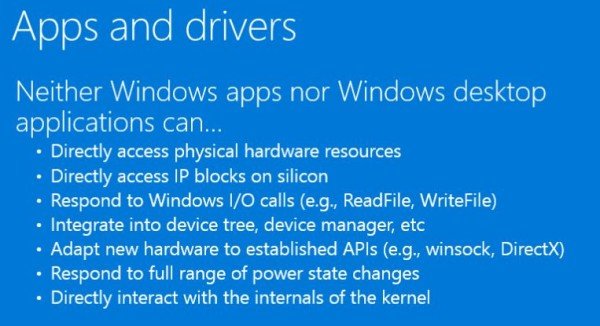In a presentation released by Microsoft, titled Journey To One Windows, it has used the term Windows Apps for Windows Universal Apps. Thus Metro apps or Modern apps or Windows Store apps or Universal apps will now go by the name of the Windows Apps

In its own words:
“Apps built on Windows Universal App Platform are called Windows Apps”
Windows Apps defined
The presentation is basically for developers of Windows 10 apps and provides them with pointers as how to develop apps that will run on all device types. It specified that the Windows 10 API will be common and hence an app developed for a tablet will also run on mobile phone or vice versa. Only some of the apps developed for PCs may not be accessible on mobile phones.
In a slide in the presentation, Microsoft has defined how the APIs will work for Windows Apps
- Windows Apps (Windows Universal Apps will run on all device families such as IoT, mobile, tablets, bigger tablets, and PCs). Windows desktop applications are not based on the logic of Windows App and hence will not be available for smaller device families. I suppose this indicates high-end programs such as Corel Draw, Photoshop etc.
- Both Windows Apps and Desktop Apps can access WinRT, COM (component object models), and Win32 APIs
- While Windows Apps will have strong app identity (both static and dynamic), Windows Desktop applications would be more of raw processes and exe.
- Windows Apps would be isolated per user or per app storage for both local and roaming. On the contrary, Windows desktop applications such as Corel Draw and Corel PhotoPaint will be using shared user profiles to provide computer level access to the application.
- Windows Apps will participate in app resource management which is a dynamic technique to allocate and release resources as and when required. In contrast, Windows desktop applications will use the process-level lifecycle, meaning the basic skeleton of the program would stay in the RAM as long as the program is being used.
Another slide of importance is given below. It says that neither Windows desktop applications nor Windows apps will directly access physical hardware resources. They will not be able to use functions such as ‘read’, ‘write’ etc. To perform such actions, the desktop application and Windows app developers will need to create a Windows driver.

Do remember to read The Journey To One Windows for a Windows 10 Hardware Platform review, links and other details.
Leave a Reply